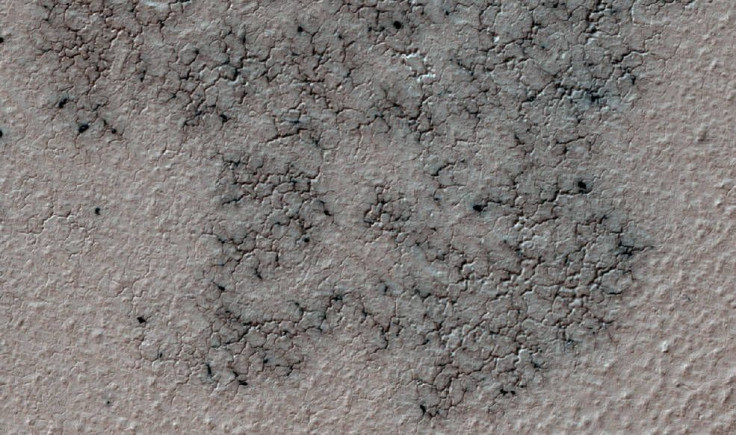Spiders On Mars? NASA Scientists To Study Mysterious Ice Formations On Red Planet

Just in time for Halloween season, NASA is talking about some pretty creepy sounding formations on Mars: spiders.
The American space agency said last week that they had enlisted ten thousand volunteers to study the phenomenon, which are a type of seasonal terrain of cracks in ice sheets on the planet’s South Pole that resemble spindly spider legs. The volunteers are reviewing low resolution images to identify where NASA’s Mars Reconnaissance Orbiter should take a closer look.
"It's heartwarming to see so many citizens of planet Earth donate their time to help study Mars," Candice Hansen, the deputy principal investigator of the orbiter’s High Resolution Imaging Science Experiment (HiRISE) camera, said in a release last Thursday. “Thanks to the discovery power of so many people, we're using HiRISE to take images of places we might not have studied without this assistance."
The volunteers have helped identify more than 20 regions on Mars that NASA may investigate further with high resolution images. The terrain in question is characterized by channels in the surface coming together at a single point in a way that roughly resembles legs of spiders. Previous studies have theorized the formation is caused by thawing in the icy terrain from underneath that allows melted carbon dioxide to build pressure before escaping through vents in the surface-level ice sheet.
“The trapped carbon dioxide gas that carves the spiders in the ground also breaks through the thawing ice sheet,” Meg Schwamb, a planetary scientist with NSA, said in the release. “It lofts dust and dirt that local winds then sculpt into hundreds of thousands of dark fans that are observed from orbit.”
Mars is the home to giant slabs of ice that are estimated to be as big as California and Texas, researchers have found previously. Those slabs of ice have led researchers to believe that Mars was once the home of rivers, lakes and seas millions of years ago when it was warmer. That relatively recent discovery of ice has led some to believe that, with terraforming, humans may one day colonize the red planet.
© Copyright IBTimes 2024. All rights reserved.






















